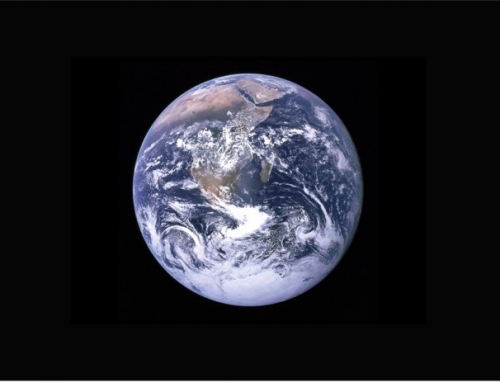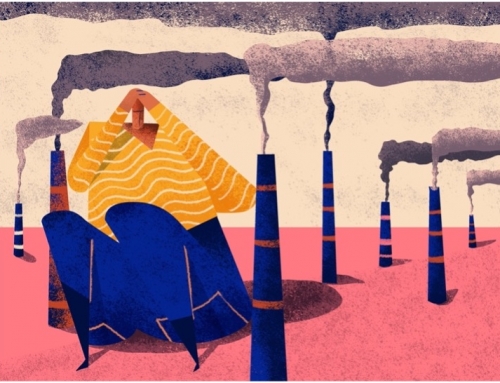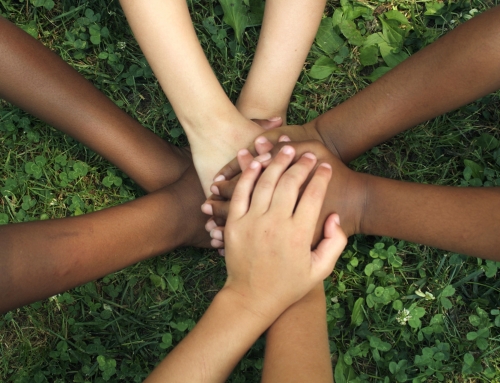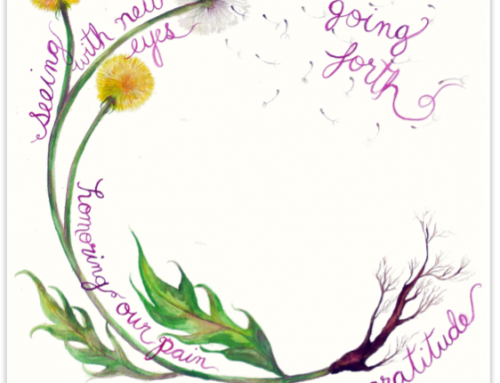I still remember the time during my first year at Breda University of Applied Sciences when we had the introduction days about the different tracks. I remember listening to a presentation about Social Innovation and thinking, “Is this really for me?”. I knew I wanted to do something meaningful during my studies, but I didn’t know where to start. Social Innovation seemed too far from my reality, complex to understand and probably out of my capabilities too, I thought. There was a lot of confusion, but a few months later, I joined Performatory and took a leap of faith.
My Journey as Social Innovator
I have always been passionate about climate change and the environment and knew I wanted to make a difference. I had been gradually exploring this area for a while, and I felt it was time to take a deeper dive and figure out how I could contribute to this enormous, complex challenge. While working to raise awareness about this issue on campus and setting up the first Green Office of our university with my classmate and friend Annalena, I was also discovering my true interests. During my first research project as Social Innovator, I focused a lot on the intersectionality of the climate emergency by looking at indigenous communities and the impact of deforestation on native areas. However, although this is still one of my main interests and concerns, it didn’t feel like my professional focus. Project labs, workshops, and community events passed, and step by step, I started to feel more at ease. I was still discovering and confused but at ease. At the beginning of the second half of my first year at Social Innovation, I started a project that changed everything. Without noticing, I was entering the most meaningful, exciting, and challenging assignment of my university career. I didn’t know it then, but that project would be the start of my dream job at my dream company: Climate Streamers Foundation.
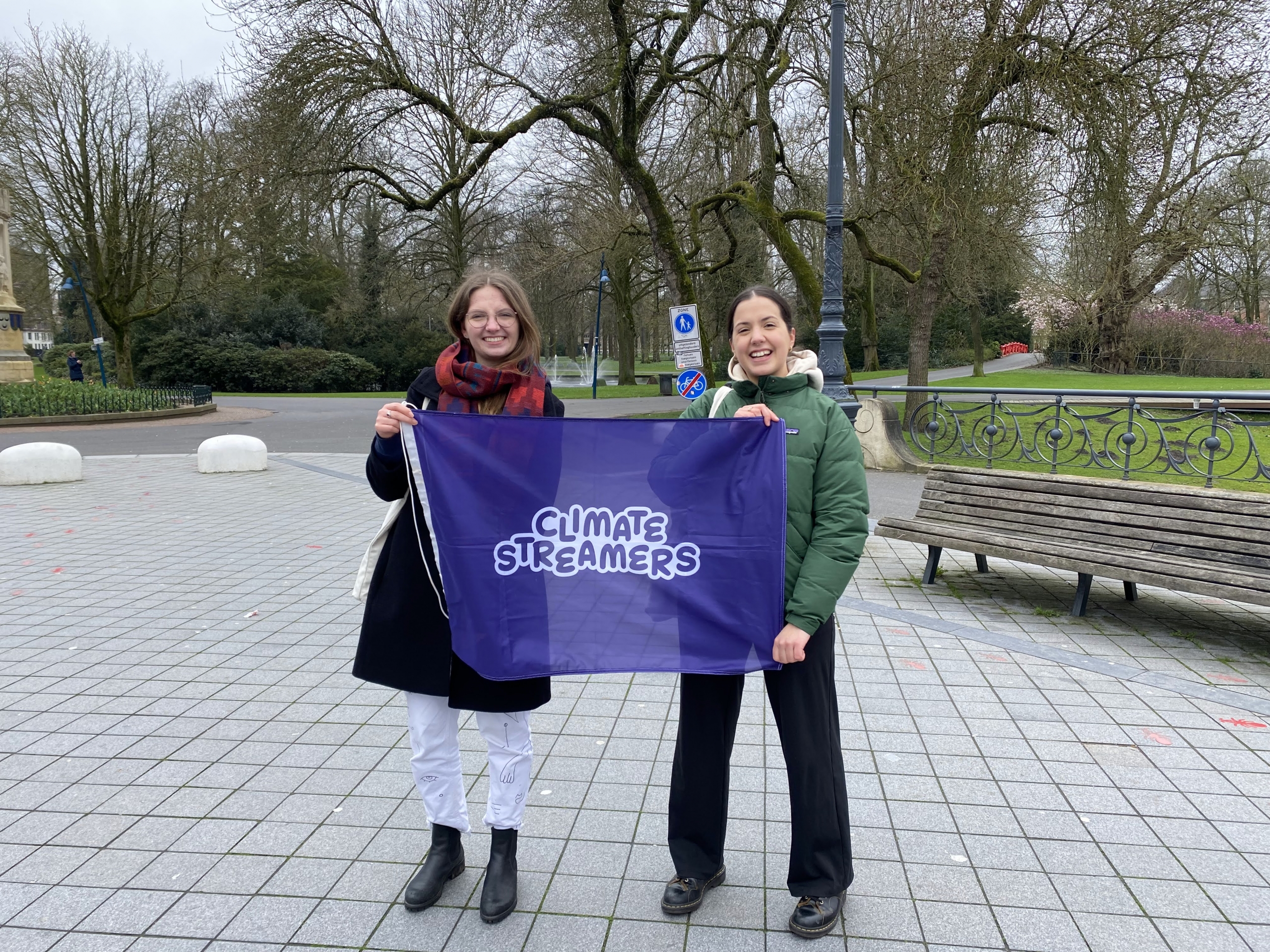
Climate Streamers started as an idea developed with my classmates Alexandra Jahnke and Noah Blanken with the supervision of our three mentors, Paul Nipius, Hein van Stokkom, and Nick Schinkelshoek. The project aimed to develop a new climate movement targeting people between 16 and 25 years old. It took almost a year to research, ideate, and create a concept that satisfied us and stood out from the rest. Until December 2021, when, after months of reflection, we signed the papers to register Climate Streamers as a non-profit organization. It was sudden, I must say, but it felt right, and so we took this enormous responsibility and started shaping our following projects. Meanwhile, I was also embarking on my second research project, using the outcome of this assignment as a starting point.
Discovering My Focus
While creating Climate Streamers, I discovered the impact that communication has on individuals, regardless of their involvement or interest in the topic. From my experience, labels like “environmentalist” or “activist” carry a lot of assumptions and prejudices, often creating invisible barriers to empowerment and productive dialogues. In a hyper-connected society, where we can be aware of all issues worldwide just by scrolling through our feeds, everything looks increasingly complex, dividing people and polarizing communities. Young people feel powerless, and fear for the future is among the main concerns of young generations (Marks et al., 2021). There is so much pressure and negativity that believing in a better next day is almost impossible. So, in my fourteen weeks of research, I started reading books and articles, and I interacted with diverse groups of people to understand where all of this came from.
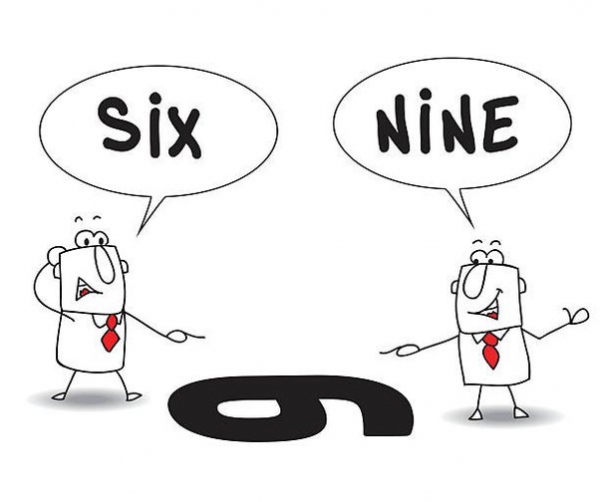
Like all topics, this also entails a complex net of factors and actors influencing the process. My findings relate well to social constructionism, the theory explaining how people create meaning and understanding through social interaction and shared experiences (Leeds-Hurwitz, 2009). According to this framework, our perceptions of reality are contrasted through our interaction with others and the culture in which we live. Reality is not simply a reflection of objective truth. Knowledge and truth are not fixed and absolute but are shaped by beliefs, norms, and practices.
What I discovered is that, even when it comes to climate change and climate action, we shouldn’t simplify the complexity of this reality and, in my opinion, pretend the world to change from one day to the other. Even in this field, detaching from labels and seeing beyond assumptions is essential. Each of us has different reasons and truths, but we fail to see them. We are all strongly opinionated and do not listen to the other person’s words. And like that, we enter a loop of endless assumptions and absolute truths (Guzmán, 2022). This is often encouraged by media outlets that benefit by telling a black-and-white story and dividing their audience. Positive stories, which are solution based and stimulate active hope, do not make it to the headlines of most media outlets. These stories do not attract debates nor increase views and followers. But we have the power to decide our narratives and change the way we interact with each other.
My “Why”
The “doom and gloom” ** and “I am right, you are wrong” narrations create a lot of hate and negativity, directly affecting youth and future generations. This general social atmosphere, combined with the urgency of the climate crisis, is having a significant impact on the well-being of people as it is strongly affecting their mental health. A recent study on climate anxiety conducted among 10,000 young people between 16 and 25 years old portrays a scenario in which sadness and stress play a constant role in youth lives, and 77% state that the future is frightening (Marks et al., 2021). Youth feels a general lack of trust in the future, which leads to questioning our role in contributing to a better world. Young people feel hopeless and powerless, but how can we expect people to act if they don’t see a future ahead? If everything you see is negative and broken, how are you supposed to find strength and act towards a better future?
I do not blame people for giving up: it is human. It takes effort, patience, and a lot of energy to try and look at the other side of the medal too. But I believe there is so much power in listening to each other and telling personal stories that we must re-learn how to do it. Embark in my journey and co-design new ways to tackle climate action and dialogues with me. Let’s bring hope back into our stories; let’s be hopepunks (Kelsey, 2020)***.
*The Green Office is a space for students to discuss sustainability related topics and organise activities to raise awareness and inspire action. Many universities in The Netherlands have a Green Office.
** Definition of ‘doom and gloom’ by Kelsey (2020): This narrative assumes the universal decline into a dystopian future.
*** Definition of Hopepunks by Kelsey (2020): It is a narrative of positive resistance, about committing to what you believe in and acting as a force for good. Hopepunks acknowledge that caring requires strength and bravery.
References
Guzmán, M. (2022). I Never Thought of It That Way: How to Have Fearlessly Curious Conversations in Dangerously Divided Times. BenBella Books.
Kelsey, E. (2020). Hope Matters: Why Changing the Way We Think Is Critical to Solving the Environmental Crisis. Greystone Books.
Leeds-Hurwitz, W. (2009). Social Construction of Reality. In S. Littlejohn, & K. Foss (Eds.), Encyclopedia of Communication Theory (pp. 892-895). Thousand Oaks, CA: Sage Publications. https://doi.org/10.4135/9781412959384.n344
Marks et al. (2021), Young People’s Voices on Climate Anxiety, Government Betrayal and Moral Injury: A Global Phenomenon. Available at SSRN: https://ssrn.com/abstract=3918955 or http://dx.doi.org/10.2139/ssrn.3918955

